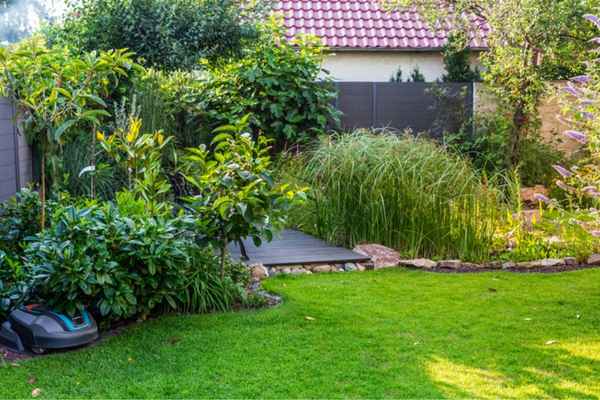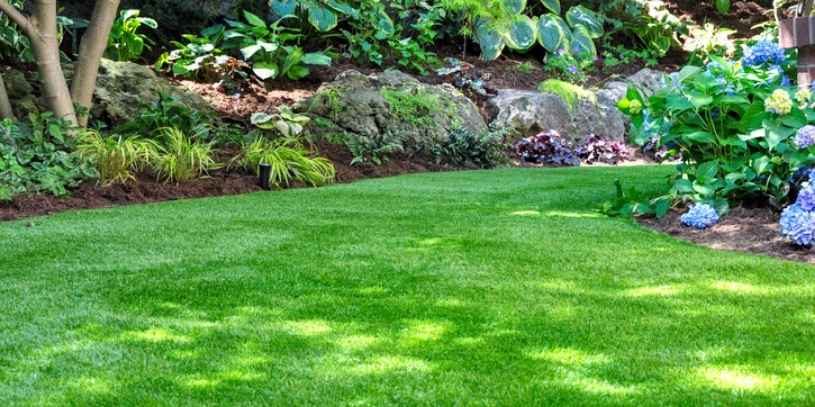Weeding is one of the most dreaded and never-ending chores for gardeners. But what if there was a better way? What if you could stop pulling weeds altogether and prevent them from growing in the first place? If you’ve ever spent a Saturday morning hunched over your garden, yanking out stubborn weeds by hand, you’ll likely appreciate the convenience garden robots offer.
If you’re considering a garden robot, but are not sure what to expect, Automated Outdoor Solutions can help. Read on to find out if a garden robot is right for you and how to get set up.
What is a Garden Robot?
A garden robot is a smart, automated device that handles repetitive or tedious gardening tasks. This includes weeding, trimming, watering, and monitoring soil conditions. Think of them like robotic assistants for your backyard, similar to how robot vacuums help with cleaning your floors.
There are several types of garden robots available, each with a specific purpose. One of the most popular and widely reviewed examples is the Tertill Weeding Robot. It was designed by one of the original creators of the Roomba robot vacuum. It’s a solar-powered, self-charging machine that autonomously controls weeds in a vegetable garden.
How Do Garden Robots Work?
The magic behind garden robots lies in their sensors, automation logic, and energy systems. While each robot has its own unique setup based on its job, most follow a few shared principles.
Autonomous Navigation
Most garden robots use some form of autonomous navigation to move around your yard or garden space. Instead of being remote-controlled or guided manually, they rely on bump sensors, proximity detectors, and gyroscopes to identify obstacles and reroute their path.
For example, a robot that pulls weeds often moves in straight lines until it bumps into a plant, border, or stone. When that happens, the robot adjusts its direction and keeps going. This kind of “bump-and-go” pattern might seem random, but over the course of hours and days, it covers the entire area.
Some advanced gardening robots (such as robotic mowers) also use GPS tracking, perimeter wires, or app-based boundaries to keep them within defined zones.
Task-Specific Functions
Every garden robot is designed with a specific task in mind, and the tools they use depend on that purpose. Here are some examples:
- Robots for weeding typically use string trimmers or stirrers to cut or disrupt small weeds before they can grow.
- Watering robots connect to irrigation systems. They measure soil moisture and deliver water only when needed.
- Mowing robots use spinning blades just like lawnmowers, but they operate slowly and quietly throughout the day.
- Monitoring robots use environmental sensors to gather data and either store it or send it to a companion app.
Most garden robots don’t need constant supervision. They might not be “AI geniuses,” but they’re reliable and consistent. That’s often more helpful in a garden than anything fancy.
 Power and Energy Use
Power and Energy Use
A lot of modern garden robots run on solar power, especially the ones meant to stay outside full-time. Solar panels charge an internal battery during the day, and the robot works in short bursts depending on its energy levels.
Others might use rechargeable batteries that need to be plugged in occasionally. Some are even connected to the home power grid through an outdoor socket. However, that’s becoming less common as solar tech improves.
Once set up, these machines take care of their task, recharge as needed, and keep your garden running smoothly behind the scenes.
Who Can Benefit From Garden Robots?
These robots aren’t just for tech enthusiasts; everyday gardeners benefit from them too. These are people who love their plants but just don’t have the time or physical ability to manage every detail.
Busy Homeowners
You may be struggling to find time for regular weeding and garden maintenance between work, family, and other responsibilities. Garden robots help keep things under control without requiring a weekly gardening session. It’s like having a part-time gardener that works while you’re doing literally anything else.
Older Adults and People with Limited Mobility
Weeding and digging can be tough on your knees, back, and hands. For older gardeners or those with physical limitations, bending over to weed or push a heavy lawnmower can be downright painful. Garden robots reduce the physical strain by taking over the most labor-intensive chores.
New Gardeners
If you’re just getting into gardening, there’s a lot to learn. Robots can help by removing the pressure to stay on top of everything manually. Some robots with monitoring capabilities even offer tips or reminders through their companion apps to provide a little digital coaching along the way.
Sustainability-Minded Gardeners
If you’re trying to avoid pesticides, conserve water, or make your garden more eco-friendly, robots can help. Weeding robots eliminate the need for chemical herbicides, while watering robots help prevent overwatering. These small tools can have a big impact on your sustainable gardening practices.
What Are the Pros and Cons of Garden Robots?
Like all other technology, robots for gardening aren’t foolproof. Whether or not they’re worth the investment really depends on your garden setup, lifestyle, and expectations. Before making your final decision, take a moment to weigh these pros and cons.
The Pros
- Time-saving: Robots take over weeding, mowing, and other repetitive tasks. This gives you time to focus on planting, harvesting, or just relaxing.
- Consistency: Unlike humans, robots don’t skip days or get tired. They follow the same routines they’re programmed for.
- Eco-friendly: Many garden robots are solar-powered and reduce the need for pesticides, herbicides, or excessive water use.
- Helpful for physical limitations: These robots are great for gardeners who can’t comfortably kneel, bend, or lift.
- Low maintenance: Once set up, most of these robots only need occasional string replacements, firmware updates, or cleanings.
The Cons
- Limited to certain garden types: Some gardening robots require specific spacing or layouts to work well. If your garden is too crowded or irregular, it might not be a fit.
- Initial setup takes time: While they run independently once started, you do need to set boundaries, clear the area, and prep the space.
- Not theft-proof: Unless they’re equipped with GPS, outdoor robots can be targets for theft, especially in open or shared garden spaces.
- Tech limitations: Most robots aren’t programmable in detailed ways. If you’re expecting full smartphone integration, plant recognition, or voice control, you might be disappointed with some makes and models.
- Price tag: The Tertill Weeding Robot might run you about $150 during a promotional sale. However, a robot that trims your lawn could cost thousands of dollars.
 How Do I Set Up and Run My Garden Robot?
How Do I Set Up and Run My Garden Robot?
Getting started with a garden robot isn’t as complicated as it might sound, but your success depends on how carefully you follow the setup instructions.
Step 1: Choose the Right Robot
First, make sure the robot you’re buying fits the job. Don’t get a watering robot if your main struggle is weeds. Check product specifications for:
- Area coverage
- Power source (solar vs. rechargeable)
- Garden requirements (flat surface, borders, spacing)
Step 2: Prepare the Garden Area
Before placing your robot in the garden, prep the space to suit its needs. This might involve:
- Removing existing weeds (if it’s a prevention robot, not a remover).
- Creating a border to keep it contained.
- Spacing plants properly to allow the robot to navigate effectively.
- Leveling out overly bumpy areas to prevent the robot from getting stuck.
- If a robot comes with plant guards or garden edging, use them to avoid ruining your plants.
Step 3: Turn It On and Let It Work
Once you’ve prepped your garden, be sure to do the following:
- Power on the robot.
- Place it inside the designated area.
- Watch it run its first session to ensure it’s navigating correctly.
From there, you can let it do its thing. Depending on the model, you may need to:
- Replace trimming strings or wheels every few weeks.
- Clean the sensors or wheels occasionally.
- Update firmware via a Bluetooth app (some robots offer updates for improved performance).
Step 4: Keep an Eye, but Don’t Hover
It’s important to check in every few days, especially in the beginning. You want to make sure everything’s working as expected. Just avoid micromanaging it. The whole point of a garden robot is to reduce your workload, not increase it.
Looking for the Best Robot for Outdoor Solutions? We’ve Got You Covered!
Automated Outdoor Solutions makes outdoor maintenance effortless with advanced robotic technology. For example, our robotic lawn mowers can help take the hassle out of yard maintenance, while saving you time and reducing tedious work.
Managing a commercial property? Or just want more time to enjoy your yard instead of working in it? Our team can guide you to the perfect robotic assistant.
Contact us online or call us at 815-308-5077 to explore our smart automation tools built for beauty, precision, and ease. You can also browse our online shop to explore the products we offer.

